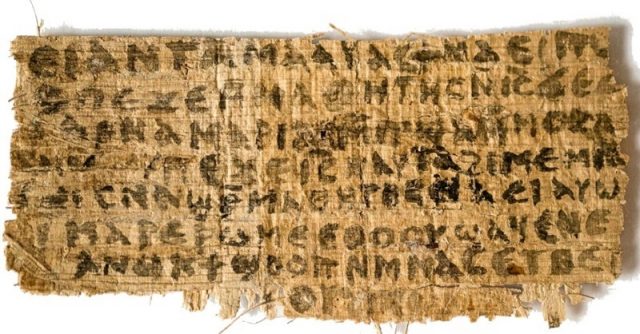New Technology Enables Reading of Ancient Bible Manuscript
In the early 1960’s M.910 arrived at New York City’s Morgan Library, but later this month, the contents of its pages may finally be legible. The research team conducting the process of uncovering the ancient Bible manuscript is anxious to find out what other work is speculated to be sandwiched in with the Book of Acts.
CBN News reported that up until present day technology allowed, there was no way for researchers to decipher the contents of the book. The manuscript was damaged by fire and water and researchers have only now been able to use x-ray imagery to analyze the text. The collaborative team of researchers, computer scientist Brent Seales of the University of Kentucky, philologist and religious scholar Paul Dilley of the University of Iowa, and book conservator Maria Fredericks of Pierpont Morgan Library, were documented by a TV news crew last month. The New York Times reported, “Having lain in obscurity for half a century, M.910’s day in the limelight has finally arrived.”
The same technique responsible for the decoding of a Dead Sea Scroll in 2016, has led the team to hope for readable pages later this month. Melville House stated that Seales has worked for over a decade to develop the CT scanning technology to “peer inside” written materials.
The Museum acquired the ancient writings, titled “Acts of the Apostles,” in Egypt, where the Morgan Library states they were written. The Coptic language is, according to Wikipedia,the latest state of the Egyptian language. “Egyptian began to be written in the Coptic alphabet, an adaptation of the Greek alphabet with the addition of six or seven signs …to represent Egyptian sounds the Greek language did not have, in the first century AD.”
The Sahidic dialect of the Coptic language that the ancient text is written in is the most prominent. Britannica states that “it is one of the best-documented and well-known dialects.” The New York Times reported the document to be written sometime between 400 and 600 A.D., before the Arab conquest in 642 A.D. Historian Melissa Moreton of the University of Iowa writes that the “Copts” are Egyptian Christians. The seminar she ran at the University, ‘Cultural and Textual Exchanges: The Manuscript Across Premodern Eurasia,’ sparked the very meetings that began the collaboration to uncover more about manuscript M.910, and Moreton assisted in a recent recreation of the manuscript.












